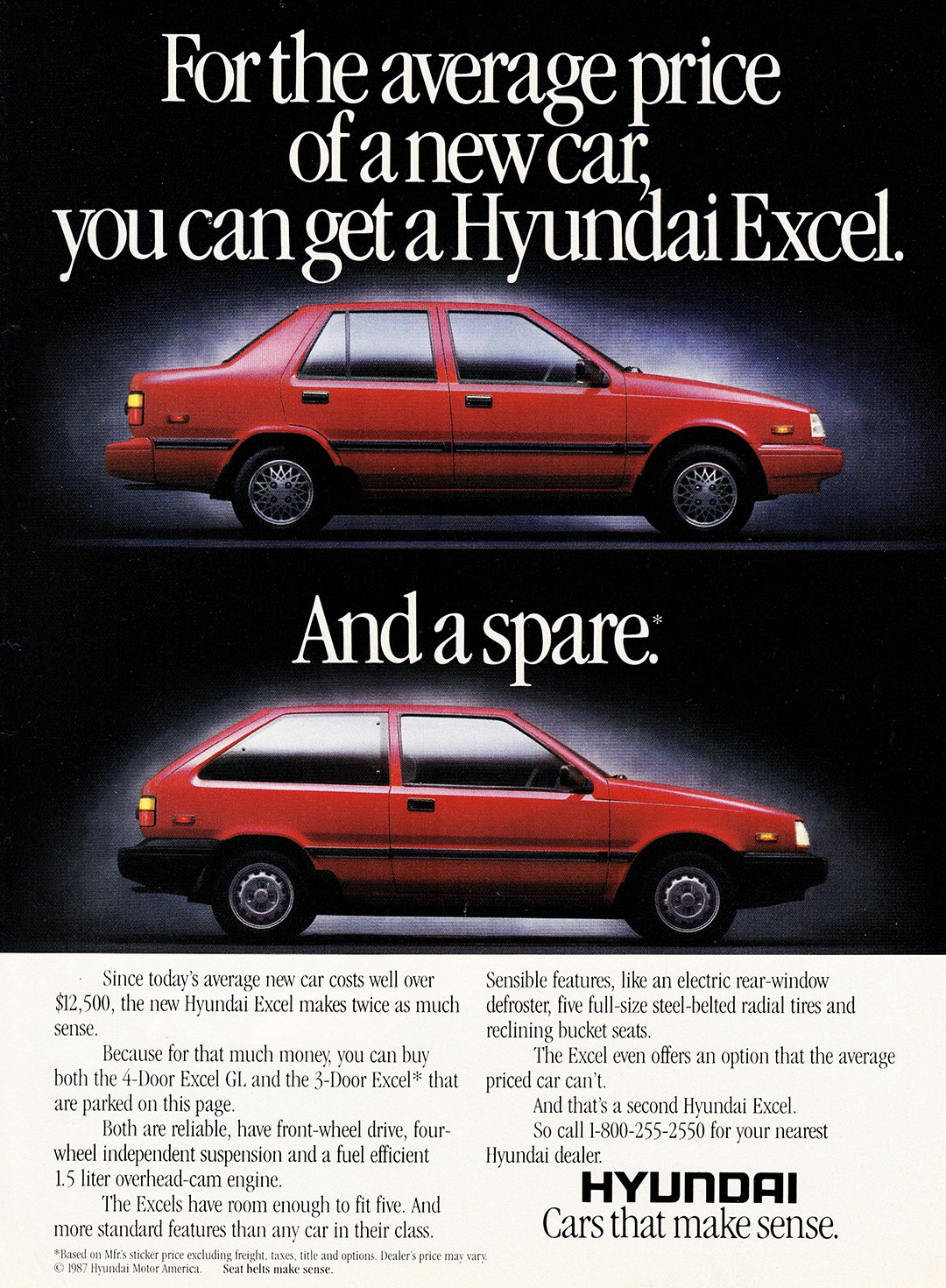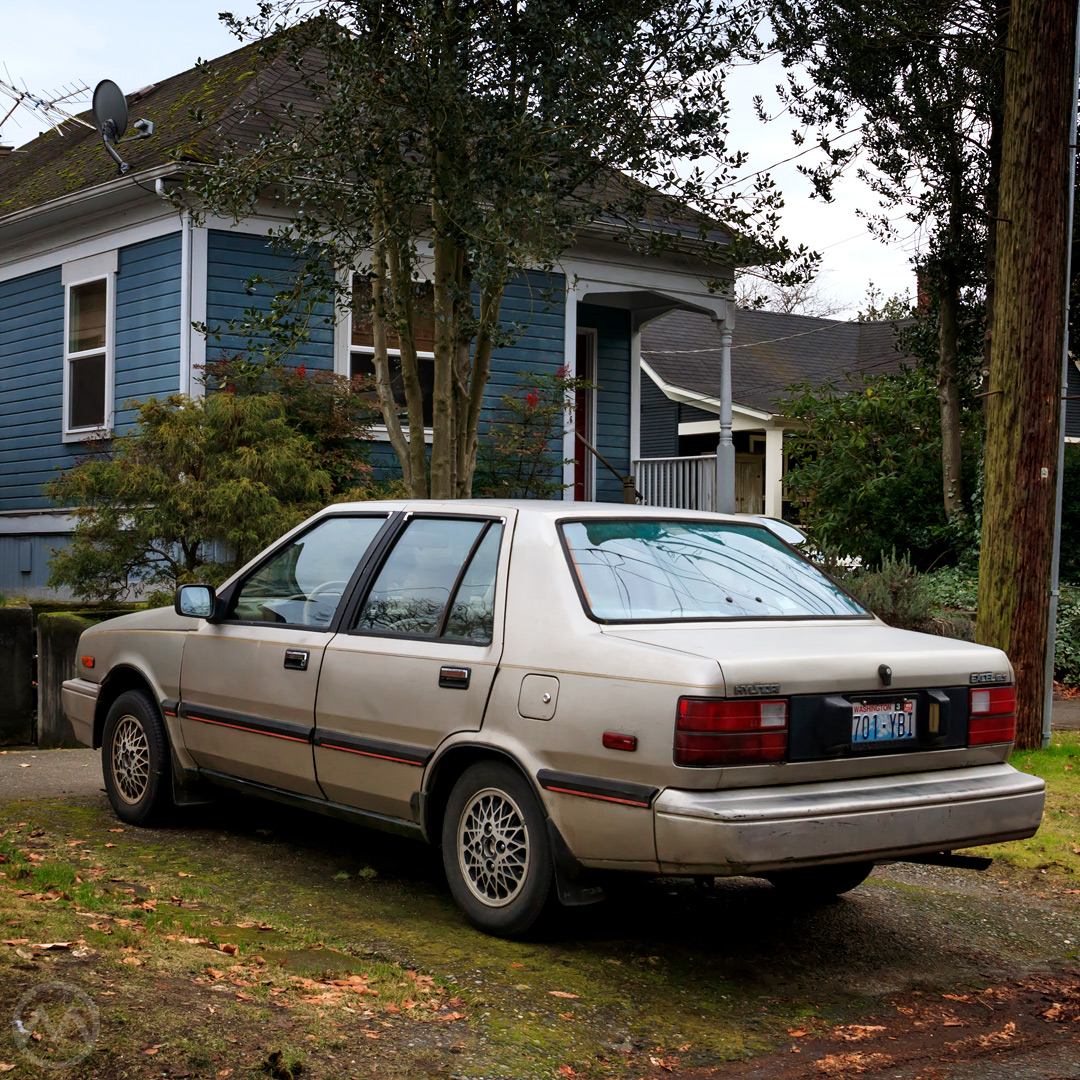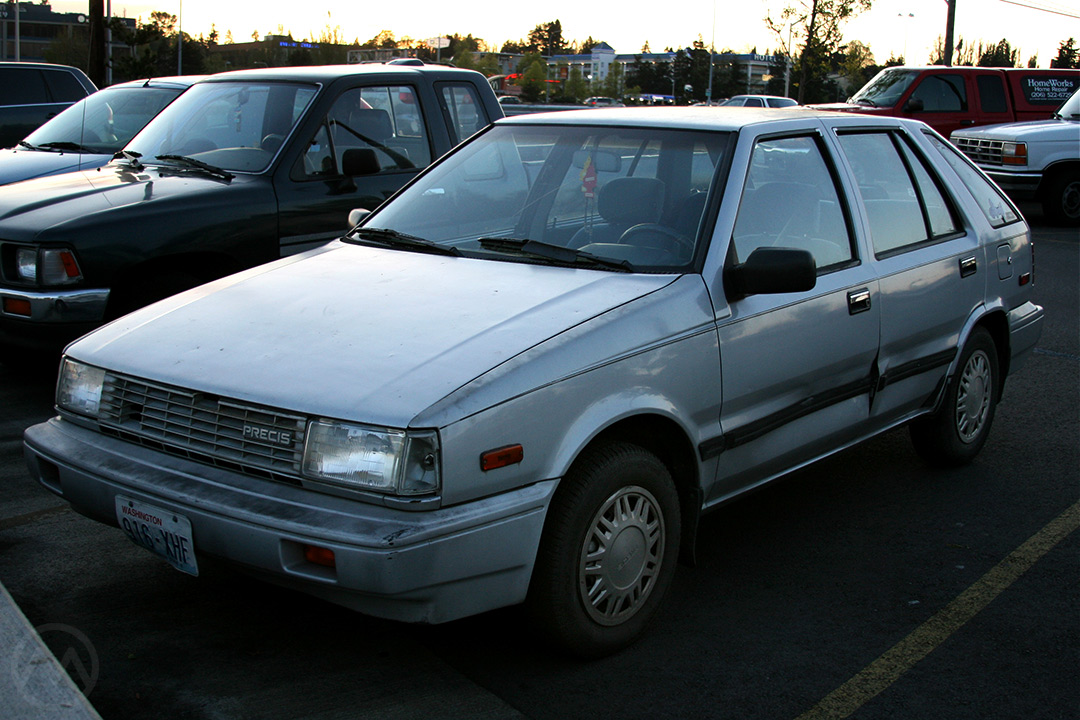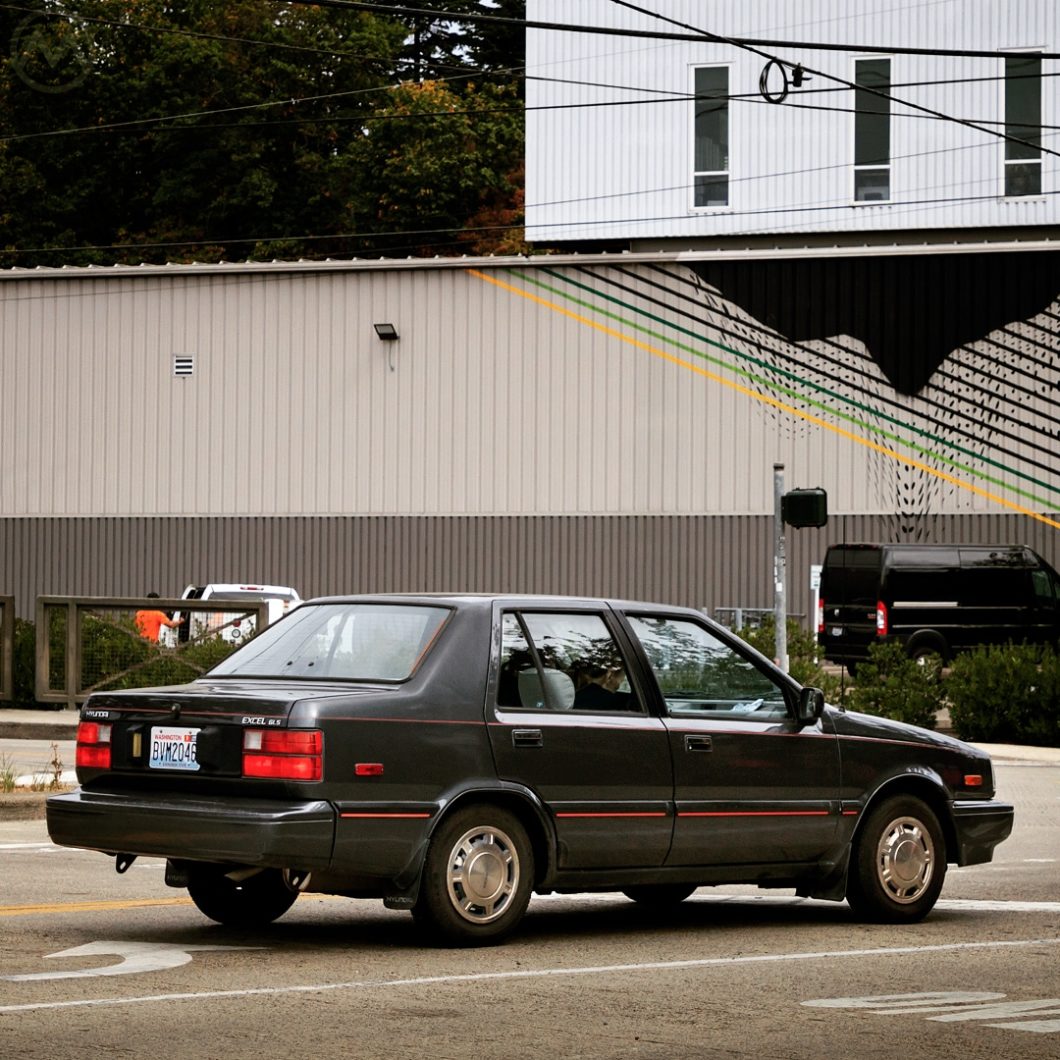You see Hyundais everywhere now, and the Korean giant is light years away from its origins as a bargain-bin brand, but it’s rare to see one of the early Hyundais.
They were cheap cars (which nobody ever pours money into to keep them going long-term) and cheaply made. But a few survive, and we spotted this 1988 Hyundai Excel in the wild last year.
The Excel was, of course, only the earliest Hyundai (and the first Korean car of any kind) in the USA. The company tested the waters in Canada with two older designs, the Ford Cortina-based Stellar and its own creation, the Mk1 Pony, for a few years before making the leap into the similar, but much larger, U.S. market in early 1986.
When it did finally jump in, it was rewarded with chart-busting sales in its freshman outing. Nearly 169,000 Excels were sold that first year, despite the fact that Hyundai only had dealers in 31 states.
The Launch of Hyundai USA
As Canadians had discovered, the Excel was *very* cheap and came with a decent warranty, and that really mattered in the mid-1980s, when you could still see rust-rimmed three-year-old late model cars in Detroit and Toronto.
The “New car with a warranty for the price of a used regular car” was a pretty popular concept in the 1980s in many markets. Nowadays, with the average car in the U.S. pushing 11-12 years of age, there’s less of an appetite.
Despite the fact that the high fuel prices of the early 1980s had collapsed by 1985, making economy cars a little less of a necessity, there was a wave of small, cheap entries in the middle of the decade. The most famous ere the Excel and the Yugo but also Chevy’s Suzuki-sourced Sprint and, later, the Daewoo and Kia based JV entries from GM and Ford, the Pontiac LeMans and Ford Festiva.

The base Excel came in at under $5,000 and Hyundai’s U.S. sales crested at 264,000 cars in 1988, the same year that the Excel/Pony got its first visual updates for the USA, gaining flush “aero” headlamps, a feature it had all along in other markets.
The quality of the car long term, however, ultimately sent many of those buyers elsewhere. Hyundai didn’t hit such numbers again until 2001.
Pony to Excel
The Excel, called the Pony elsewhere, was arguably less interesting than the earlier rear-drive Pony and Stellar, but was much more modern than either. The Stellar may only have been a restyled, reworked Cortina (Hyundai got started building licensed Cortinas), but it had most of the driving virtues of the Cortina and unique if bland, styling.
The Pony was Hyundai’s first home-grown car and had been designed under ex-Ford and British Leyland exec George Turnbull. Turnbull wasn’t an engineer, but hired the talent and steered the project, also roping in ItalDesign to style it.
The Excel, the Mk2 Pony in the rest of the world, was a far more modern car with entirely different origins. Based closely on Mitsubishi’s 2nd-gen Mirage/Lancer Fiore, it used mostly Mitsubishi hardware but was assembled in Ulsan.
This situation was not dissimilar to the 1950’s arrangements in Japan, where some Japanese manufacturers built licensed Austins and Hillmans and eventually gave them their own components, gradually creating their own cars to replace them.
As with the earlier Pony, Hyundai turned to Giugiaro and ItalDesign for the subtle, Fiat-like exterior, which bears some resemblance to the Fiat Uno and Tipo as well as Giugiaro’s Seat Ibiza Mk1. The cars were modern and clean and they drove like modern cars, though they were not fast or exciting.

Economy cars can be fun (Honda Fit, Fiat 128, Peugeot 205), but their primary mission is giving commuters cheap transportation, and that is where the lion’s share of customers are for such cars. If you’re selling cars at a low price, you have to make your profits through volume.
U.S. model Excels made do with a solitary carbureted 68hp 1.5L Mitsubishi four, with either a five-speed or an auto for the first four years of sales. Turning on the A/C meant it was even slower, but it was a dutiful commuter car, at least early on, and super cheap.
Adding options raised the price a little but usually added plenty of creature comforts, still at reasonable prices. A top-spec GLS sedan was only $6,500.
The Burn
The long-term quality of the cars was quite poor, however, and being cheap cars to start with many owners chronically skimped on maintenance; as is often the case with cheap cars. Still, they were very common into the late 1990s, so most owners probably got their money’s worth.
It’s also notable that many of the cars that do survive tend to be the higher-spec models like the ones pictured here, which cost more new and were therefore more likely to have owners who took care of them longer-term.
They were common enough even to get customizing treatment on rare occasions – a “Euro” lowrider Excel is notably used by the bad guy gangsters in John Singleton’s Boyz’ N the Hood. Another Excel was used to illustrate the title character’s economic circumstances in Erin Brockovich.
The Excel was Hyundai’s only model in the USA from 1986 to 1989, when it introduced the larger (and also Mitsubishi-based) Sonata, which we covered a couple of years ago.
In late 1989, the Excel got a mild restyle and some upgrades, including fuel injection, which made it a better and more dependable car, but it was old by then. Due to be replaced in 1992 by the new Elantra, Hyundai decided to keep it going a while longer as a very low budget model, so they kept building it into 1995.

In a similar move, Mitsubishi sold a badge-engineered version as the Mitsubishi Precis as its own U.S. market value leader. 1990 also saw the debut of a coupe version, the now extremely rare “Scoupe.”
Hyundai’s reputation with customers took a hit when the early Excels started to fall apart, but after 1997 and the Asian Financial Crisis, which forced major consolidations and industrial reforms at home, there was a huge focus on quality. That led directly to the introduction of Hyundai’s enormous warranty in the mid-2000s. You’d hardly recognize the brand now from these early days.


Motoring trivia…
The Scoupe was (In Asia and Europe) originally badged as the S Coupe… A certain German manufacture soon stopped that..!
Pingback: DiscoverNet | The 12 Cheapest Productions Cars Ever Made
Pingback: Los 12 autos de producción más baratos jamás fabricados